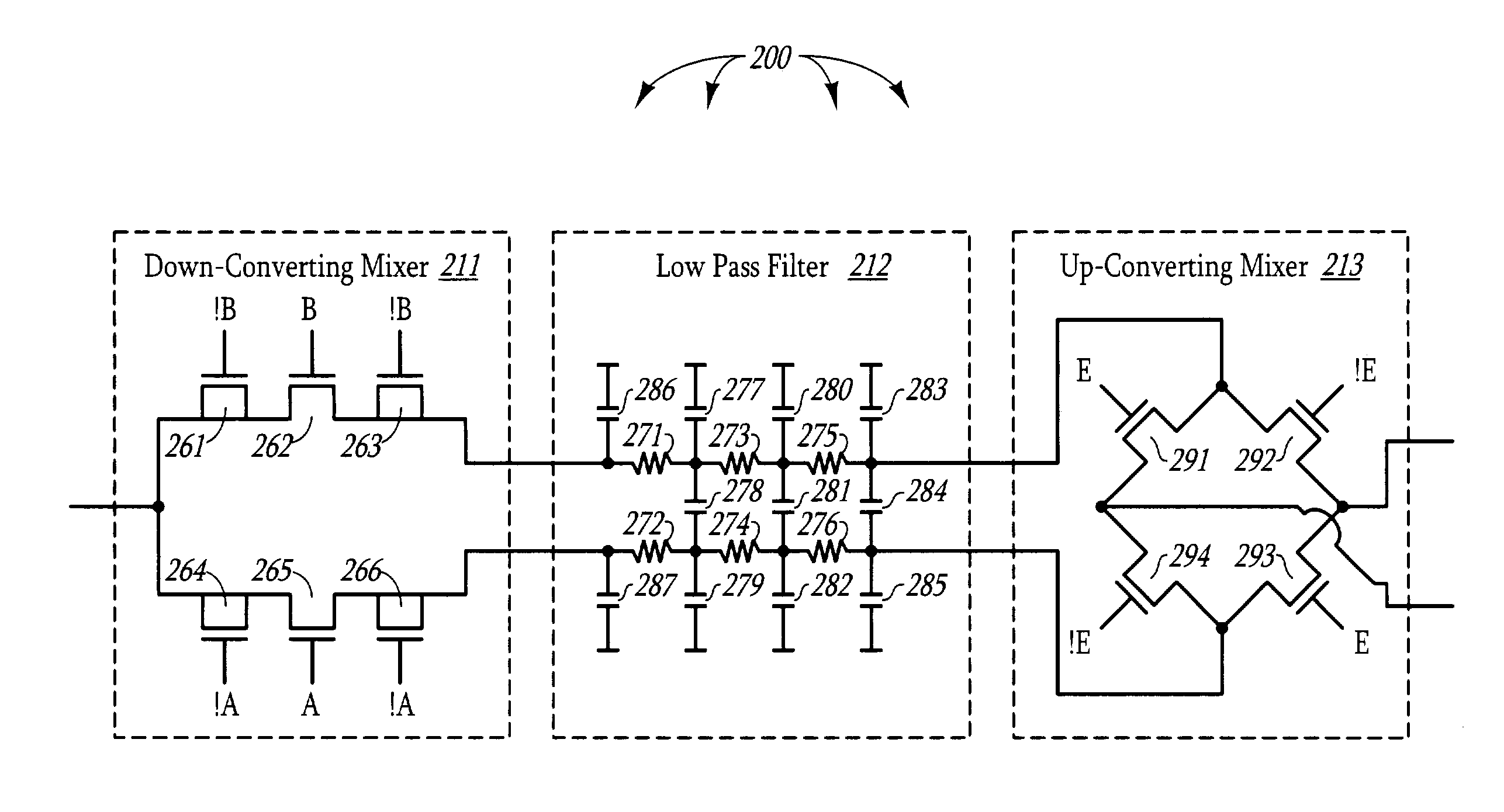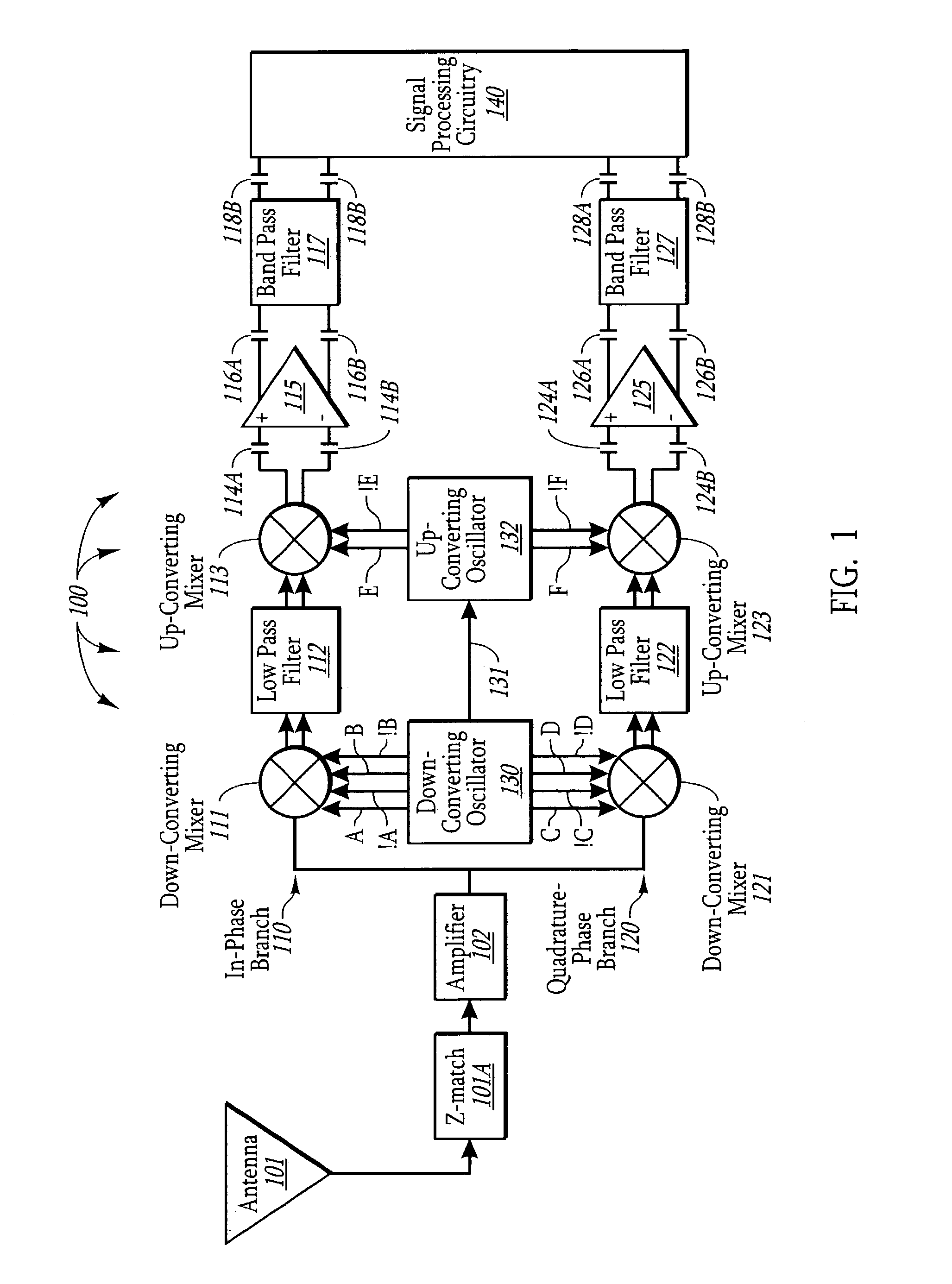Up-conversion of a down-converted baseband signal in a direct conversion architecture without the baseband signal passing through active elements
a direct conversion and baseband signal technology, applied in the direction of oscillator generators, electrical equipment, transmission, etc., can solve the problems of limiting the practical implementation of conventional direct conversion circuits, reducing the efficiency of direct conversion circuits, and limiting the effect of direct current (dc) offset and 1/f noise, so as to reduce the dc offset introduced by active elements and the effect of reducing (or eliminating) the 1/f nois
- Summary
- Abstract
- Description
- Claims
- Application Information
AI Technical Summary
Benefits of technology
Problems solved by technology
Method used
Image
Examples
Embodiment Construction
[0025]The principles of the present invention are directed towards a direct conversion circuit that not only down-converts the received modulated signal, but also, after performing a passive low pass filtering to remove higher-order components, performs up-conversion of the baseband signal using an up-converting mixer. Active elements such as highly sensitive amplifiers do not operate on the baseband signal itself, but on the up-converted version of that baseband signal.
[0026]In this description and in the claims, one node in a circuit is “coupled” to another node in the circuit if charge carriers freely flow (even through some devices and / or with some resistance) between the two nodes during normal operation of the circuit. One node in a circuit is “capacitively coupled” to another node in the circuit if there are one or more capacitors that intervene between the two nodes. One node in a circuit is “at least capacitively coupled” to another node if the two nodes are either coupled ...
PUM
 Login to View More
Login to View More Abstract
Description
Claims
Application Information
 Login to View More
Login to View More - R&D
- Intellectual Property
- Life Sciences
- Materials
- Tech Scout
- Unparalleled Data Quality
- Higher Quality Content
- 60% Fewer Hallucinations
Browse by: Latest US Patents, China's latest patents, Technical Efficacy Thesaurus, Application Domain, Technology Topic, Popular Technical Reports.
© 2025 PatSnap. All rights reserved.Legal|Privacy policy|Modern Slavery Act Transparency Statement|Sitemap|About US| Contact US: help@patsnap.com



